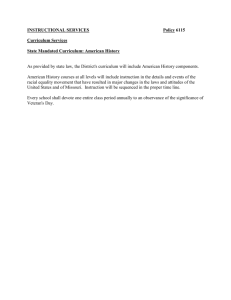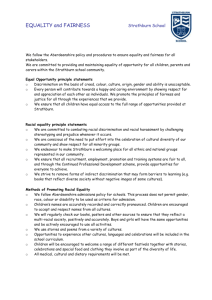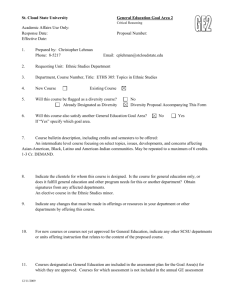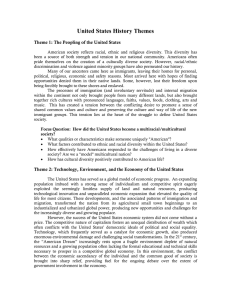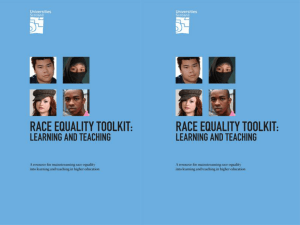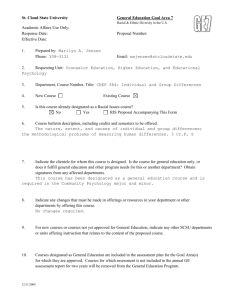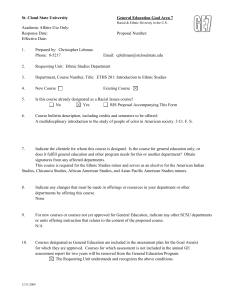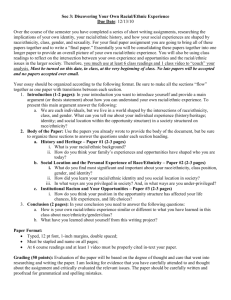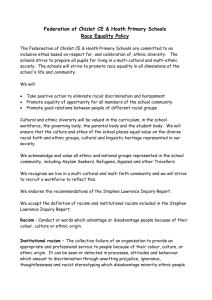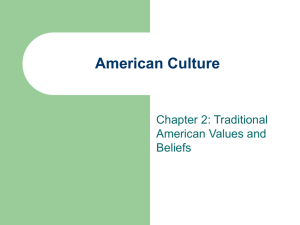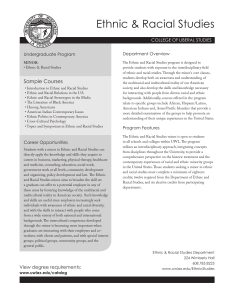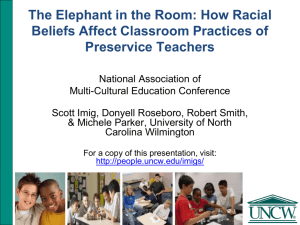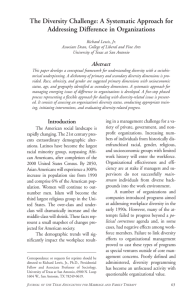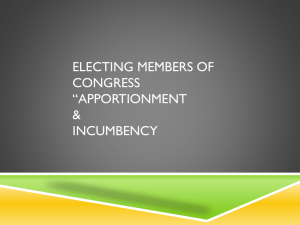Area S Assessment Schedule (doc)
advertisement
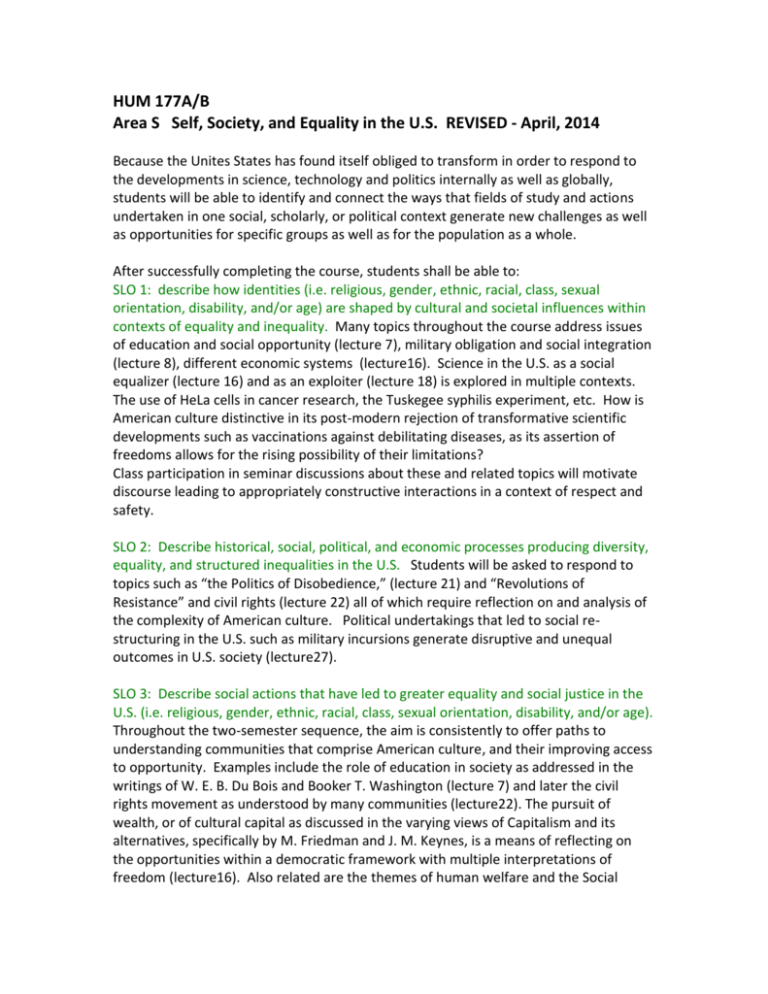
HUM 177A/B Area S Self, Society, and Equality in the U.S. REVISED - April, 2014 Because the Unites States has found itself obliged to transform in order to respond to the developments in science, technology and politics internally as well as globally, students will be able to identify and connect the ways that fields of study and actions undertaken in one social, scholarly, or political context generate new challenges as well as opportunities for specific groups as well as for the population as a whole. After successfully completing the course, students shall be able to: SLO 1: describe how identities (i.e. religious, gender, ethnic, racial, class, sexual orientation, disability, and/or age) are shaped by cultural and societal influences within contexts of equality and inequality. Many topics throughout the course address issues of education and social opportunity (lecture 7), military obligation and social integration (lecture 8), different economic systems (lecture16). Science in the U.S. as a social equalizer (lecture 16) and as an exploiter (lecture 18) is explored in multiple contexts. The use of HeLa cells in cancer research, the Tuskegee syphilis experiment, etc. How is American culture distinctive in its post-modern rejection of transformative scientific developments such as vaccinations against debilitating diseases, as its assertion of freedoms allows for the rising possibility of their limitations? Class participation in seminar discussions about these and related topics will motivate discourse leading to appropriately constructive interactions in a context of respect and safety. SLO 2: Describe historical, social, political, and economic processes producing diversity, equality, and structured inequalities in the U.S. Students will be asked to respond to topics such as “the Politics of Disobedience,” (lecture 21) and “Revolutions of Resistance” and civil rights (lecture 22) all of which require reflection on and analysis of the complexity of American culture. Political undertakings that led to social restructuring in the U.S. such as military incursions generate disruptive and unequal outcomes in U.S. society (lecture27). SLO 3: Describe social actions that have led to greater equality and social justice in the U.S. (i.e. religious, gender, ethnic, racial, class, sexual orientation, disability, and/or age). Throughout the two-semester sequence, the aim is consistently to offer paths to understanding communities that comprise American culture, and their improving access to opportunity. Examples include the role of education in society as addressed in the writings of W. E. B. Du Bois and Booker T. Washington (lecture 7) and later the civil rights movement as understood by many communities (lecture22). The pursuit of wealth, or of cultural capital as discussed in the varying views of Capitalism and its alternatives, specifically by M. Friedman and J. M. Keynes, is a means of reflecting on the opportunities within a democratic framework with multiple interpretations of freedom (lecture16). Also related are the themes of human welfare and the Social Contract in the 20th and 21st centuries as a means of thinking about social improvement in the U.S., as well as establishing alternatives to it by looking at other models (lectures 24 and 25). SLO 4: Recognize and appreciate constructive interactions between people from different cultural, racial, and ethnic groups within the U.S. Because cultural, racial and ethnic groups within the U.S. have come together from outside of the U.S., the influences of global awareness and concerns about social justice are brought together from many sources (lecture 30).


